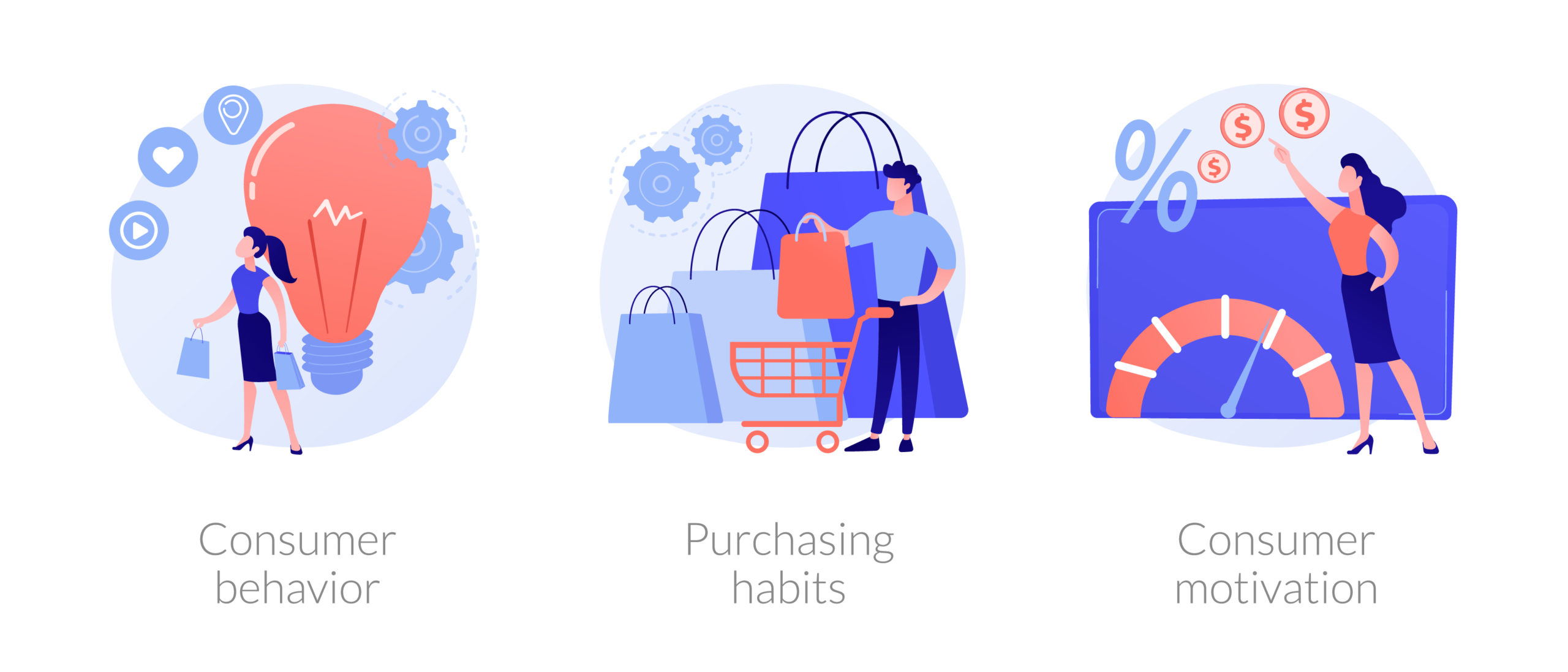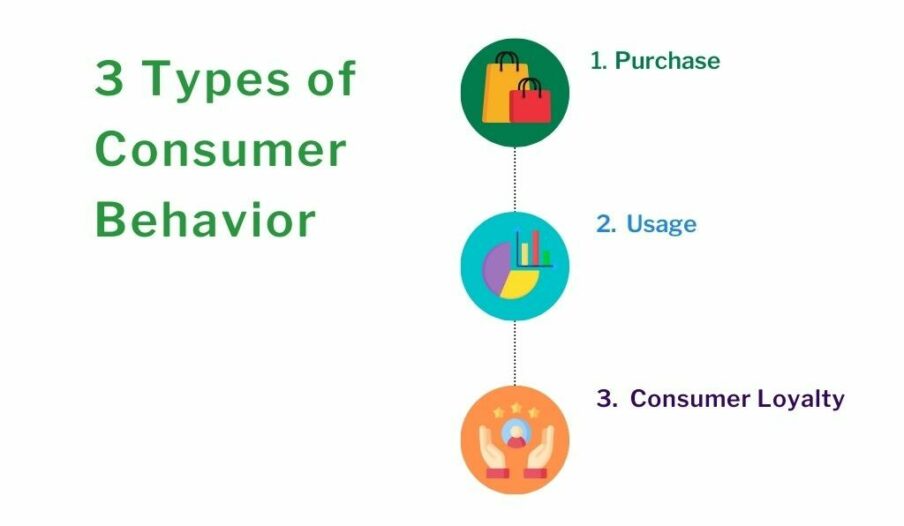How to Analyze and Predict the Behavior of Consumers?
Customer behavior Analysis and purchase is not a new concept. Before the advent of the Internet, to predict it, marketers would study a customer’s behavior to determine what products they would be interested in buying.
This was done through customer surveys, which were costly and time-consuming. With the power of data analytics though, some businesses are now able to predict consumer behavior by analyzing past purchases, search history, or even social media profiles.
For example, if a person searches for animal-related items such as fish or birds, it may lead to the purchase of pet supplies.
The amount of data that can be analyzed is limitless, and businesses are taking advantage of this opportunity to identify consumer behavior and trends to create a more effective behavioral analysis marketing strategy.
Table of Contents
- Customer Behavior And Analytics
- Understanding Consumer Behavior
- Consumer Behavioral Segmentation
- Types Of Consumer Behavior
- Rational Choice And Consumer Behavior
- How To Analyze Customer Behavior
Customer Behavior and Analytics
The increased use of digital analytics is helping marketers develop a more detailed understanding of customers’ behaviors.
Specifically, customer behavior analytics can help marketers to create targeted ads and offers as well as better understand the customer journey.
The key to successful behavioral analysis marketing is being able to identify what your customers want and then give it to them.
Customer behavior analytics is now used to predict it. There are many different types of behavioral analytics out there, but one of the most common is customer analytics.
This allows you to gather information on how your customers interact with your products or services. When you’re gathering customer analytics, you can categorize your data based on a specific topic such as customer behaviors.
As digital analytics tools have grown in sophistication, so too has the ability to glean a more detailed understanding of customer behaviors. This information can then be used to inform marketing campaigns.
Predicting customer behavior is a valuable skill for any company to have. While some companies are able to use their own data analytics platforms to provide some predictive insights, other companies may not have the resources to do so.
Use Behavioral Modeling to Acquire New Customers
Understanding Consumer Behavior
Customer behavior analytics platforms are available in many different formats, including desktop applications, SaaS, and even as part of a marketing suite. As a result, it is important to select the right type of platform for your business.
A customer behavior analytics platform that fits your needs and budget will be more valuable than an over-hyped solution that lacks the functionality you need.
Digital Tracking of Customers
Digital tracking is the use of technology including GPS to track the movements of customers.
Geofencing: Geofencing is a virtual barrier that can be set up around a specific area or location.
Geotagging: Geotagging is the process of adding geographical information to images, videos, and other types of media.
For eCommerce marketers, there is the option to use digital marketing analytics for a variety of different purposes:
-Digital tracking of consumer behavior can help with eCommerce marketing by providing insight into what kinds of products are popular and which ones need to be adjusted or removed.
-Digital tracking of consumer behavior can also be used to find out what digital channels consumers are using to view products.
-Lastly, digital tracking of consumer behavior is a way to get customer insights about their preferences and how they want to interact with the company.
Consumer Behavioral Segmentation
Behavioral segmentation is an effective and efficient way to use your customer behavior analytics platform to predict customer behavior.
It’s possible to identify consumer segments of interest, such as frequent purchasers or heavy shoppers, and tailor marketing messages to them. Segmentation can also be used to create custom offers tailored to customer interests.
For example, if you know that a segment of customers is interested in travel, you can include special discounts and deals for those people.
A SaaS solution, Customer Data Platform Oyster by Express Analytics creates a persistent, unified customer database that is accessible to other systems. Want to know more? Check out the Oyster demo.
Consumer Behavior Analytics
The ability to predict customer behavior is critical for success in the retail market.
Having a customer behavior analytics platform in place allows retailers to predict it better, and understand their customers and how they behave, which is a crucial aspect of understanding what customers want, and is vital to designing and launching successful products.
Customer experience management: This encompasses the entire customer life cycle, from the moment a customer-first experience your brand to the point when they choose to leave your organization.
3 Types of Consumer Behavior
Purchase behavior: what a consumer is willing to buy.
- Demand: the overall level of interest in a product, service, or brand
- Retention: how long a consumer continues to use a given brand
- Recall: how accurate consumers are when recalling their purchase experiences
Usage behavior: how the product is used.
- Attrition: the percentage of consumers who leave a product or brand due to dissatisfaction, perceived lack of value, or other factors
Consumer loyalty: The extent to which consumers remain loyal to one brand over time.
- Post-purchase behavior: how a consumer feels about the product when they buy it
- Pre-purchase behavior: how a consumer decides which product to buy
How Consumers Behave?
- Consumers are more likely to buy a product if it is on sale
- Consumers are more likely to buy a product if they have heard about it from someone they trust
- They are also more likely to buy a product if they feel that it is necessary
- They are less likely to buy a product if they have to pay more for it
- They are also more likely to buy a product if they have seen a demonstration of it first
- Post-purchase behavior: how a consumer feels about the product when they buy it
- Pre-purchase behavior: how a consumer decides which product to buy
Rational Choice and Consumer Behavior
The rational choice theory has been controversial because of the subjective nature of preference and the ability of individuals to be irrational.
Rational choice theory is the study of how people make choices based on the information they have, their goals, and the constraints they face. The theory has three basic assumptions:
- People are rational and have preferences
- All choices are made under the constraints of limited money, time, and energy
- People are ignorant of the consequences of their actions
These three assumptions make up what is called the theory of rational choice. The theory emphasizes that individuals make choices based on limited information and the constraints they face at the time.
The theory has also been criticized for overlooking social influences on decision-making and the effect of advertising, promotion, and other marketing efforts.
Main takeaways of rational choice theory:
- It’s subjective
- Undermines the effect of social factors
- Can’t explain the effect of advertising, promotion, and other marketing efforts
In his 1997 paper “The End of Economic Man”, economist James Gwartney argues that human behavior in markets is not controlled by people’s independent rational judgment about tradeoffs, but by an emotional factor called loss aversion.
Use Behavioral Modeling to Acquire New Customers
How to Analyze Customer Behavior
One of the main techniques is the Behavior Analysis and Modeling (BAM) approach.
This is a dynamic, data-driven modeling technique that combines the best of traditional customer segmentation and behavioral analysis to identify how customers behave as they move through the purchase decision process.
The BAM technique identifies the purchase cycle stage for each customer and the most profitable marketing approaches to apply to different stages in the purchase process.
It also allows marketers to identify their customers’ behaviors at each stage of the purchase cycle.
BAM is a hybrid technique that provides both benefits of traditional behavioral segmentation and benefits of traditional CRM techniques.
The BAM approach uses four stages to identify behavior patterns and use these patterns analysis to create marketing strategies: Beginning the process to try to develop a “pragmatic, respectful, and trusting working relationship with the client” using critical reflection.
The first stage is most commonly overlooked in terms of its importance. The practitioner is motivated to recognize the client’s problem, not just the manifestations.
In the second stage, the practitioner identifies the behavior patterns that are a result of the client’s problem.
Here, the practitioner is not making a diagnosis of the client’s problem, but rather observing the client’s behavior in response to their life situation.
In the third stage, the practitioner identifies the relationship between the client’s problem and their behavior. This is the most important and difficult step in BAM.
It is important to note that this stage also does not make a diagnosis of the client’s problem, but rather brings out the relationship between the client’s problem and their behavior.
The practitioner is identifying the client’s problem and showing how the client’s behavior creates, maintains, or worsens the problem.
In the fourth stage, the practitioner provides suggestions for how to alter the client’s behavior to bring about positive change.
Also, BAM is different from other CRM techniques in that it does not use a database for marketing to customers.
In conclusion: The power of data analytics has enabled some businesses to predict consumer behavior by analyzing previous purchases, search histories, or social media profiles.
Companies that can accurately predict customer behavior will have an edge over their competitors. There are a number of customer behavior analytics platforms available, including desktop applications, SaaS, and even as part of a marketing suite. Therefore, selecting the right type of platform is crucial to your business.
In the end, you’ll get more value from a customer behavior analytics platform that fits your needs and budget than from overhyped offerings without the functionality you need.
An Engine That Drives Customer Intelligence
Oyster is not just a customer data platform (CDP). It is the world’s first customer insights platform (CIP). Why? At its core is your customer. Oyster is a “data unifying software.”
Liked This Article?
Gain more insights, case studies, information on our product, customer data platform



No comments yet.